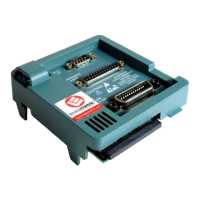TDS2CM Communications Module
TDS 200-Series Extension Module Instructions
19
RS-232 Conventions
There are processing conventions that are specific to the RS-232
interface. The next sections discuss transferring binary data,
processing break signals, reporting RS-232 I/O errors, and checking
command status.
Transferring Binary Data
When using the RS-232 port to transfer binary data to the
oscilloscope, note the following points:
Use hardware flagging (RTS/CTS) whenever possible. Hardware
flagging guarantees no data loss.
All eight bits of binary data contain meaningful information. To
make sure that all eight bits are received or transmitted,
configure the external RS-232 device to receive and transmit
eight-bit characters (set the RS-232 word length to eight bits).
Reporting RS-232 I/O Errors
Errors are reported when there is a problem with parity, framing, or
input/output buffer overruns. To report errors, the oscilloscope posts
an event code. When an error occurs, the oscilloscope discards all
input and output and waits for a new command.
Checking Command Status
If you want to check the status of each command sent, you can
append an *STB? query after every command and read the response
string.

